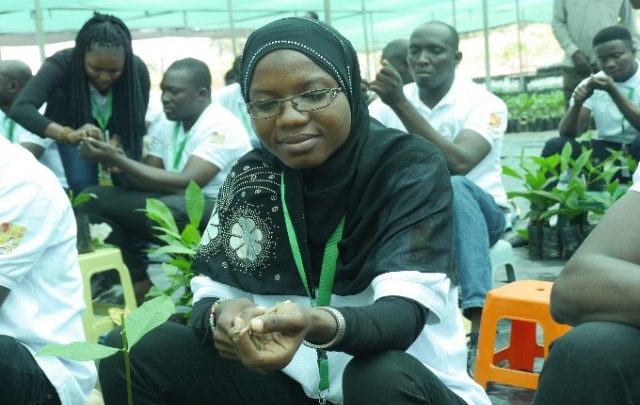Life StyleNews
Gender and policies in the cashew sector

The cashew sector, much like agriculture as a whole, has traditionally involved the participation of men and women, youth and adults. Although cashew, in the past, was not given much focus as an economic crop, it has become an area of interest, especially in the last decade and a half, as its economic benefits have been discovered.
For instance, the African cashew sector raked in about $196 million in revenue in 2017, and cashew contributed about 53 per cent of Ghana’s non-traditional tree crop export in 2018. The annual global demand for cashew has also been consistently increasing by 7-10% over the last ten years. In 2018, Africa contributed 57 per cent of global cashew production.
With its increasing demand, the cashew sector presents many employment and stable income opportunities for all, especially rural women. The cashew sector currently employs thousands of women across the value chain, but there are still specific challenges that reinforce gender gaps and prevent women from accessing the opportunities available in the sector. Social and cultural beliefs that indirectly limit women’s access to education, land, capital, as well as unpaid domestic work that reduces women’s time for income-generating activity, are a few of these challenges.
Another key challenge is the general absence of strong gender-specific policies to close gender gaps within the cashew sector. Over the years, efforts have been made in various cashew-producing countries to resolve some of the needs of the underprivileged in the development of cashew sector policies.
Strategies have been planned to promote income-generating activities for women and young people. For example, at the government level, Burkina Faso demonstrates this in its national vision of an agricultural sector held by women and youth. In Benin, gender mainstreaming is being done in cross-cutting activities.
Other value chain actors are also increasingly making conscious attempts at mainstreaming gender in their outfits. Several processing plants in the sub-region have demonstrated this by implementing policies such as non-discrimination related to gender in remuneration and other socio-professional benefits. Others include the separation of toilets and showers, provision of canteens, day care centres, study halls and vocational training for both male and female staff.
Current involvement of women in the cashew value chain
While the proactive action by the private sector is commendable, there is still a need for gender regulatory policies from government.
In the production of cashew, a significant number of women are involved in harvest and post-harvest activities. In view of this strong presence of women in these production-related activities, a study revealed that training tools were naturally developed to include women. In Ghana and Benin, beekeeping projects introduced on cashew orchards are also carried out mostly by women.
In recent times, women have also been heavily involved in grafting, thus the production of improved planting material. Nursery managers have expressed preference for female grafters over male, as the success rate of seedlings has been observed to be higher when grafting is done by the former. In spite of this observed expertise of women which culminates in the increase of quality and quantity of cashew produced locally, hardly any women own nurseries in Ghana and the sub-region.
In processing, women constitute about 80 per cent of the workforce. This would have been a praiseworthy achievement except for that majority of these women occupy the lower ranks in the processing plants and thus, earn low incomes. Their main roles include shelling, peeling, sorting, classification, and cleaning. There is barely any female representation at decision-making and managerial levels. To date, those who succeed in owning processing units are considered rare exceptions.
Women and young people’s access to land
Certain cultural provisions within the sub-region have made it quite difficult for women and youth to gain access to land. Although the legislation does not discriminate against access to and possession of land, socio-cultural factors play a huge part in the discrimination against women. This fact, coupled with the perennial nature of the crop, makes it even more cumbersome for these groups to access arable land. The relatively long period of cultivation renders leasing land for a short term almost impossible. In some cases, landowners have been reported to reclaim ownership of the lands when the production of trees was at its peak.
Nevertheless, some successful cases of lobbying and community mobilisation to facilitate women and young people access to land in neighbouring countries could be referred to. The ultimate goal is to create a change of mindset. In addition, there are other noteworthy strategic approaches underway in Burkina Faso, namely:
• The adoption of Rural Women’s Day to promote gender equality and female empowerment amongst rural folk;
• The implementation of a national strategy to promote women’s entrepreneurship that addresses the issue of women’s access to land;
• Community organising by women’s associations to request for a plot of land to cultivate as a group (common field system).
Actively involving women in the development of the cashew sector
The correlation between the financial empowerment of women and the economic independence of African countries is intrinsic. Seriously considering and making provision for the active engagement of women in the sector would not on only be beneficial to them but to the economy of producing countries. Facilitation of access to finance for sector actors, particularly women, would ensure an increase in production and local processing, and consequently, increase in job creation for the population.
Would it be right to presume that the low representation of women in policy-making partly explains why decisions have so far not integrated specific challenges women face? An organisation that does not have equal representation of the population cannot have a satisfactorily holistic approach, or policies since not all perspectives are reflected. Various experiences have shown that thinking, speaking, deciding and acting for women without women is counterproductive. Women should, therefore, be included actively in decision making in the sector.
Capacity building is definitely another strong pillar to ensuring active female participation in the sector. Governments could set compulsory quotas for women in training programmes. An example of this is seen in the approach used by the GIZ-implemented cashew project, the Competitive Cashew initiative (GIZ/ComCashew).
In the cashew Master Training Programme, a quota of one woman for every three men presented by each institution is required. The training, which focuses on training cashew sector actors on production-related issues, processing and supply chain linkage topics, has so far trained over 482 cashew sector experts from 16 African countries, 24% of whom are women.
In addition, the Consultative International Cashew Council (CICC) could commit to pushing for gender mainstreaming in policy formulation and implementation. The CICC is an international body that brings cashew-producing countries together to dialogue on and promotes regulation of the sector, with the objective of making the cashew sector more competitive and profitable for all stakeholders.
Currently made up of ministers of agriculture from African countries, it should make mainstreaming gender in its member countries’ policies one of its priority areas. Commitment of member countries, specifically ministers and other executive members, must follow if any tangible results are to be achieved.
The need to optimise and value the contribution and responsibility of all stakeholders is increasingly becoming apparent. The socio-economic benefits of reducing gender disparities in living conditions and incomes, as well as improving food security for all, cannot be overemphasised. It is now about finding the most appropriate and effective strategies to use in reaching targets. In this vein, both private and public sector actors should be involved in creating and implementing solutions. Political will is a fundamental starting point. Cashew focal persons at the Ministry of Food and Agriculture must actively work for the integration of gender in policies and strategies.
After integration, it is also necessary to ensure validation of documents and reach out for external support for implementation. This is a process that needs to be initiated right from the design stage, supported by actual implementation activities, and must have a particular focus on mindset change. Monitoring and evaluation during the different phases, thus at the beginning, during the implementation and at the end of an intervention, will allow necessary readjustments upstream and downstream.
Another way of promoting women’s participation is the formulation and implementation of policies that facilitate their access to land. This would move women from the operational level to more strategic managerial and technical positions like plantation management and ownership.
Mentorship by female leaders, investment in training and recognition of such women in the cashew sector would also go a long to boost the morale of others and make the sector more attractive, not only to women but also to the teeming unemployed youth in the sub-region.
If any meaningful female representation and impact is to be felt in the cashew sector, all cashew sector policies must include specific provisions on female inclusion and gender perspectives. The cashew sector is profitable but still has the potential to churn out even more benefits. The acknowledgement, conscious inclusion of women and their contributions will make it go even further.
Source: Myjoyonline


